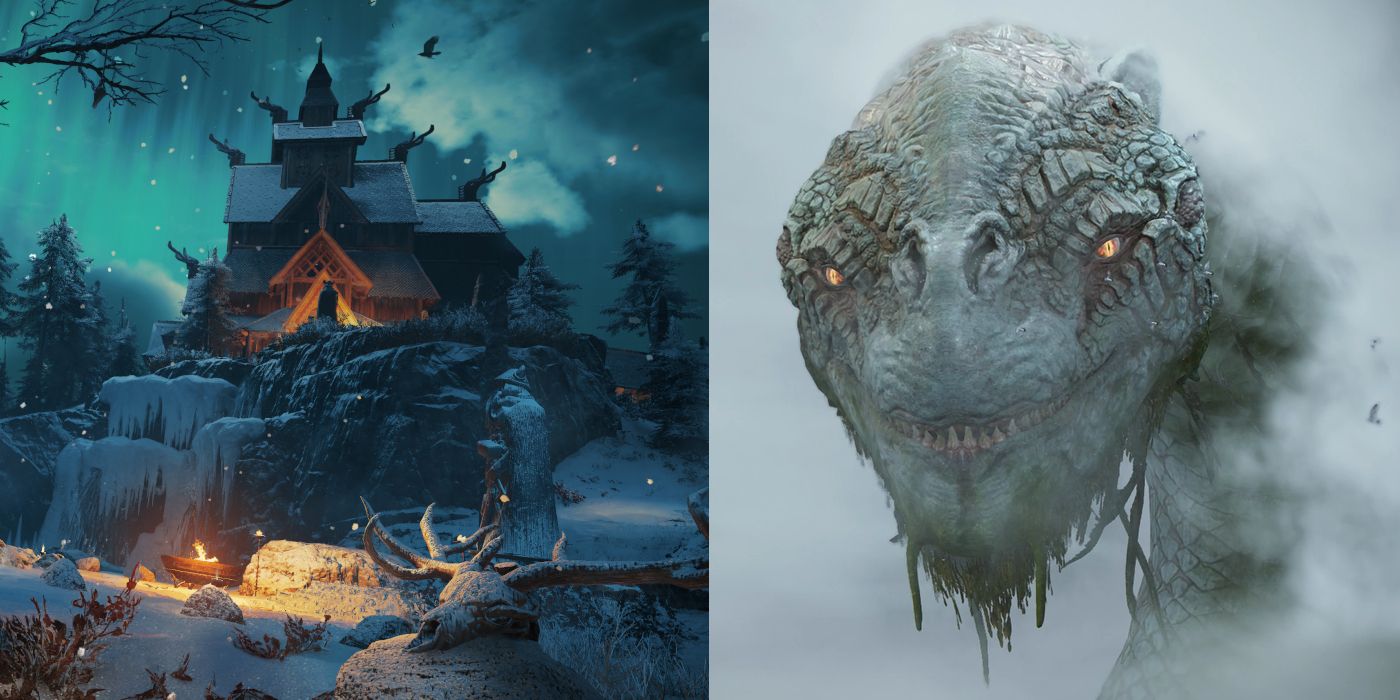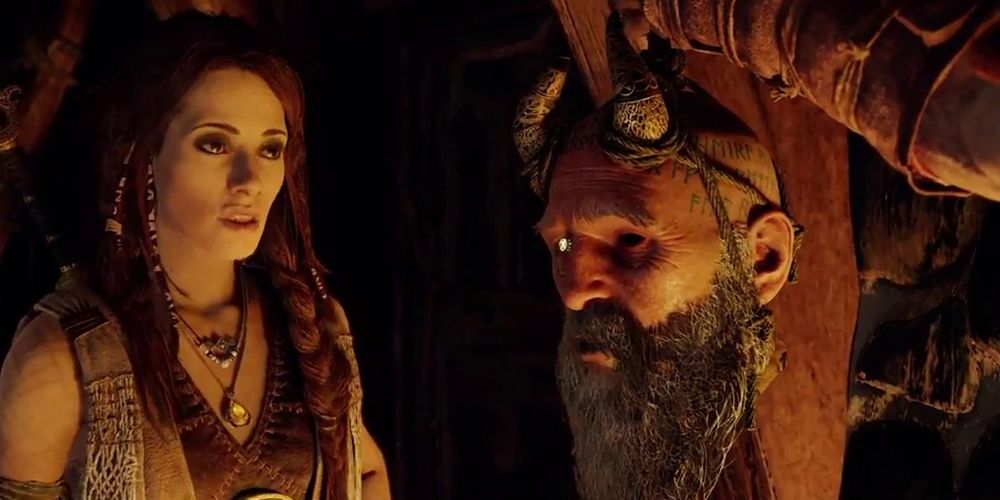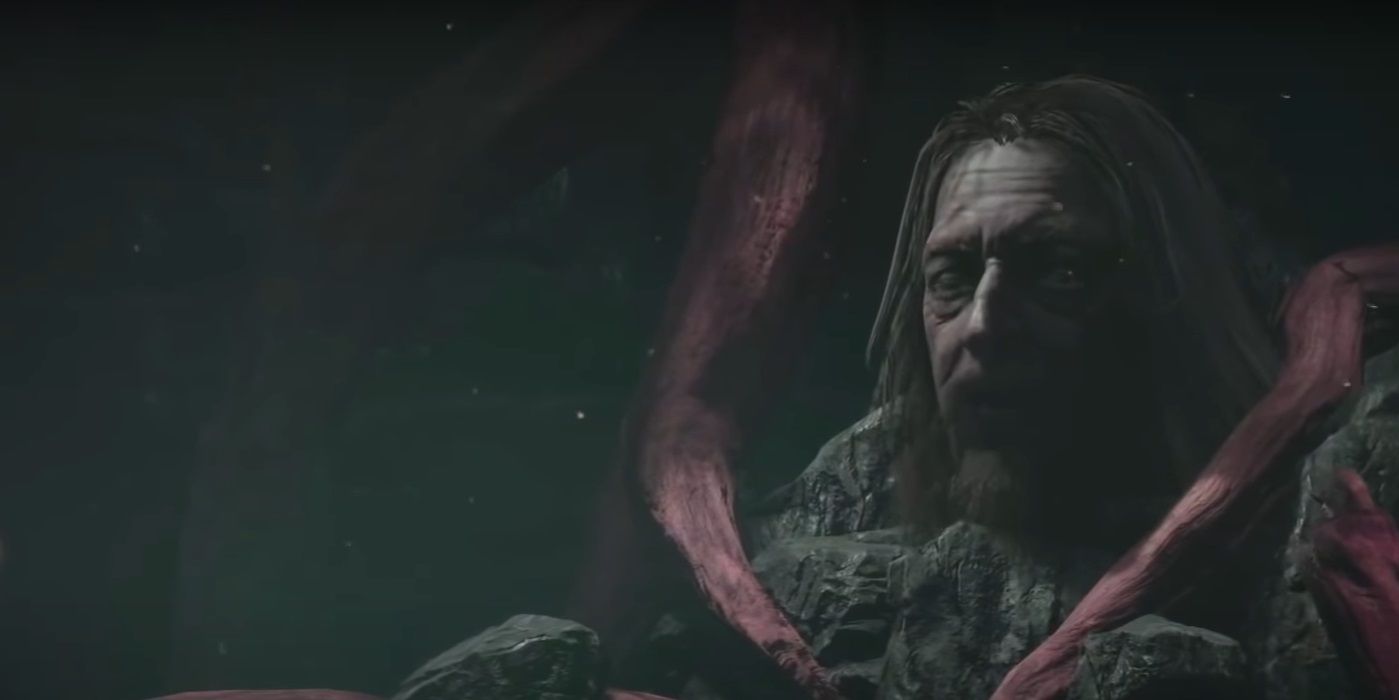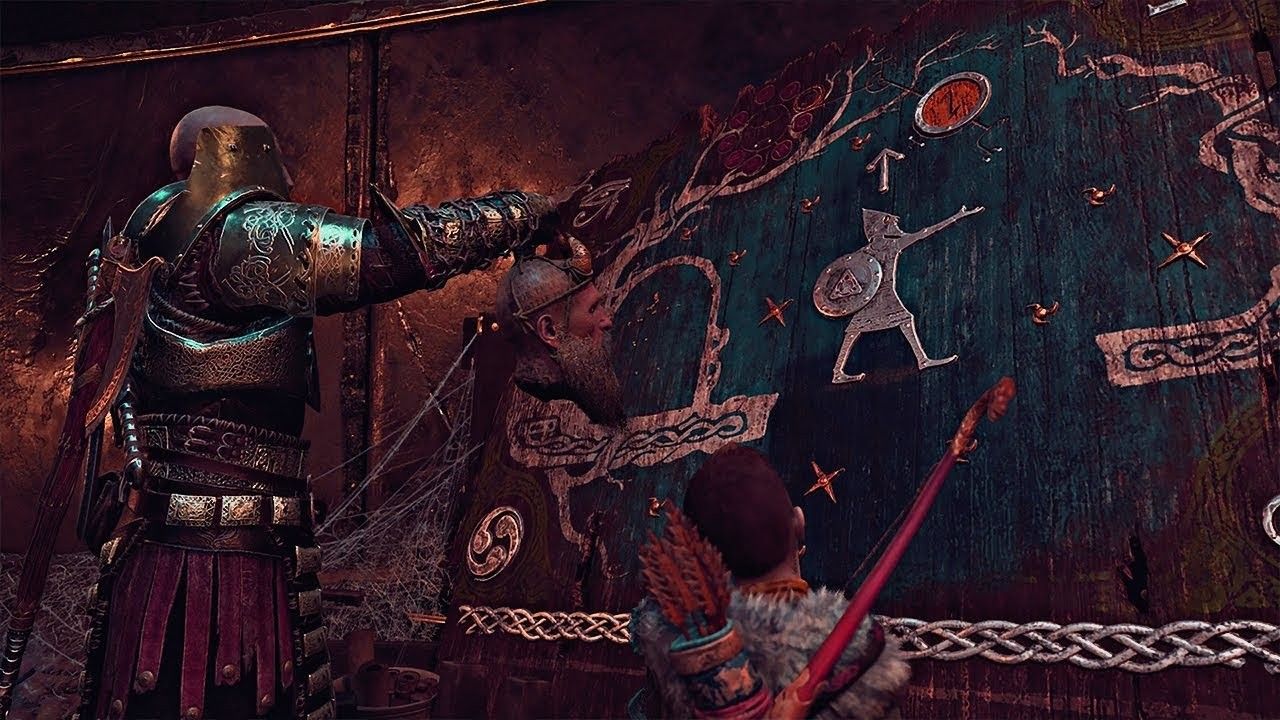Just as gaming enters the next console generation, there are two major triple-A games in the spotlight which deal with Norse mythology. One is the recently released Assassin’s Creed Valhalla, and the other is the upcoming sequel to 2018’s God of War. Not only did God of War’s soft reboot shift the setting from Greek mythology to Norse, but the new sequel will deal with Ragnarok, the death of the Norse gods (or so it seems based on its sole teaser).
These games handle the same subject matter in some tellingly different ways. Some of the same major mythological figures make appearances, but, considering one MAJOR SPOILER for Assassin’s Creed Valhalla, the two games take two very different approaches. The difference in the games' approaches to characterizing the gods also reveals an interesting divergence in the focus of each game’s storytelling which shows that, while they tackle the same mythology, they are doing so to very different storytelling ends.
PLEASE NOTE: This article contains MASSIVE SPOILERS for Assassin's Creed Valhalla.
Norse Mythology in God of War
God of War 2018 takes place in the world of Norse mythology. Kratos may have been born in Sparta, but he’s living his twilight years in Midgard, one of the Nine Realms of Norse myth. Midgard is technically Earth, but Earth as positioned in the middle layer of the Norse cosmos, with the world tree extending to Asgard, Nilfheim, and Jotunheim among other key locations.
The events of God of War, in some sense, take place during the events of the main Norse myths. This is to say that the 2018 game takes place before Ragnarok has begun, with Kratos even causing certain mythological events to take place. Norse mythology’s relationship with time is strange, however, and it’s often unclear if Ragnarok is already supposed to have taken place, will take place in the future, or is part of a cyclical death and rebirth of the pantheon. In God of War, Ragnarok is heavily prophesized but has yet to take place.
One main figure from Norse mythology who makes an appearance is Mimir, called “head” by Kratos for most of the game. Mimir is a key figure in Norse mythology, and it’s Mimir’s well that Odin sacrifices his eye to in order to gain wisdom. Creatures like the World Serpent and other Aesir like Magni and Modi feature heavily in the game. By killing Baldur at the end of the story, Kratos is portrayed as having set the wheel turning which will lead to Ragnarok, just as Baldur’s death precedes Ragnarok in the myth.
Cultural Memory in Assassin’s Creed Valhalla
There are some key differences and similarities to God of War’s approach in Assassin’s Creed Valhalla. First, Eivor’s story does not take place during the same time that the Norse myths the character believes in are supposed to have taken place. Instead, Eivor has visions of Odin and unravels the Norse gods' attempts to avert Ragnarok by reincarnating themselves. Mimir's head even makes an appearance at a key moment.
Over the course of Valhalla, the player is led to understand that Eivor is actually experiencing visions of the gods and monsters of Norse mythology because Eivor is in fact a reincarnation of Odin - an Isu - made possible using the technology available to the Isu and the First Civilization. Eivor experiences these mythological moments because of Isu technology, but is interpreting these experiences through the cultural lens of the Norse pantheon and their society’s understanding of magic.
While God of War focuses on the figures in Norse mythology themselves and making them relatable and compelling characters, Assassin’s Creed Valhalla uses the Norse myths as a means through which the main character and the society which developed those myths might be better understood while at the same time allowing players a greater understanding of the Isu, whose actions the visions are based on.
Telling Stories With Myths
The difference between the two approaches seen in God of War and Assassin's Creed Valhalla highlights a difference in the games' goals. God of War presents players with the mythology of the Nine Realms as a setting, but then tells a story with human themes within it. For example, the cycle of patricide is a major theme across the God of War games. Kratos kills his father Zeus, who had turned on his father, Chronos. By the end of God of War, it is implied that Kratos' son Atreus may kill him in the future. Pantheistic religions provide the perfect basis for telling this kind of story because patricide and family feature so heavily and to dramatic extremes.
However, the emotional notes that God of War hits resonate because the game is using the exaggerated nature of mythology to make points about the emotional lives of normal humans. While few parents have been caught in a cycle of parental murder like Kratos, many have worried that they will see the negative traits they recognize in their parents reflected in them, and that they will be unable to break the cycle and will see the same negative traits reflected in their own children.
To accomplish the goal of telling a story with relevant emotional beats using mythological characters, the gods portrayed in God of War are humanized even if their supernatural abilities are not. The World Serpent is a friendly giant despite his intimidating eldritch appearance, and Mimir's distant and all-expansive wisdom is given voice through Alastair Duncan's witty portrayal of the being as a Craig Ferguson-esque chatterbox. The mythological characters are humanized because their emotional arcs are just human emotional arcs presented in an exaggerated setting. Assassin's Creed's approach hints at a very different goal.
The mythological beings in Assassin's Creed Valhalla are, for the most part, intimidating and confusing when seen through Eivor's visions. Visions disappear in and out of reality, and players are presented with visual metaphors they don't understand like Odin and the Nirn weaving the threads of fate. However, the mythological beings in Valhalla aren't necessarily supposed to be relatable. Instead, they're supposed to help explain the Isu, but more importantly Eivor themself and their world-view and fears.
Though they also give all-new insights into the history of the Isu, one of the other main effects of the the mythological segments in Valhalla is to be to help immerse players in what it might have felt like to deeply believe in Norse myths. Despite Eivor being revealed to be Odin reincarnated, Valhalla aims to put players more in the shoes of a believer, not a god, for most of the story and to help players understand the emotional stake the main character would have in these myths.
Assassin's Creed Valhalla is available now on PC, PS4, Stadia, Xbox One, and Xbox Series X. A PS5 version of the game launches alongside the console on November 12.




